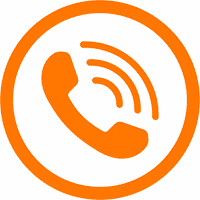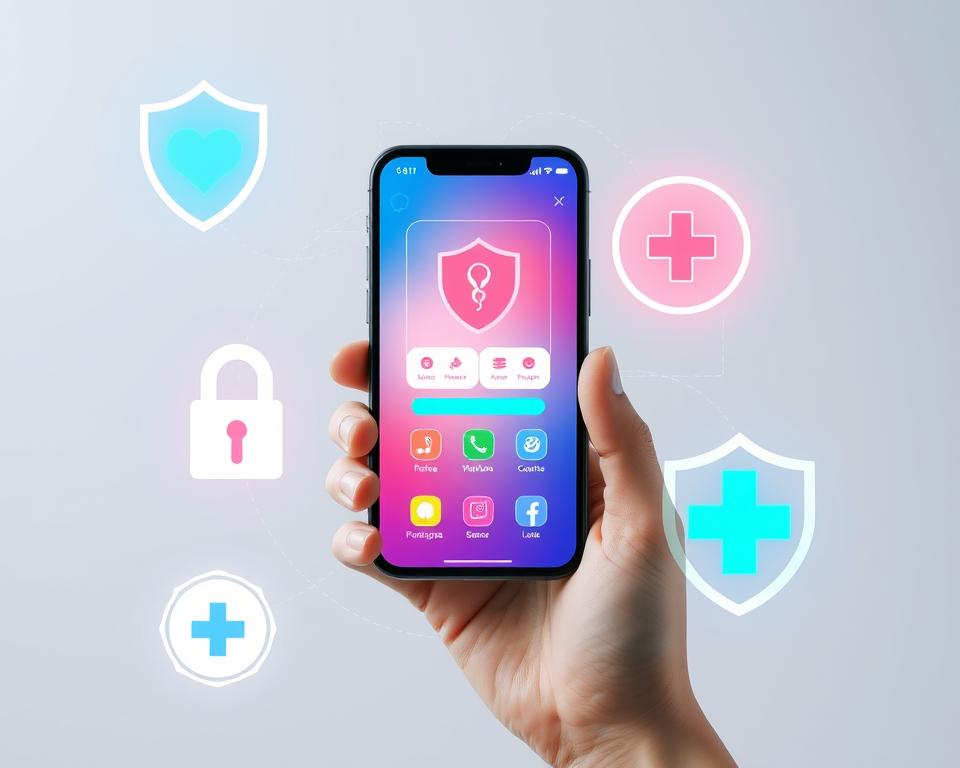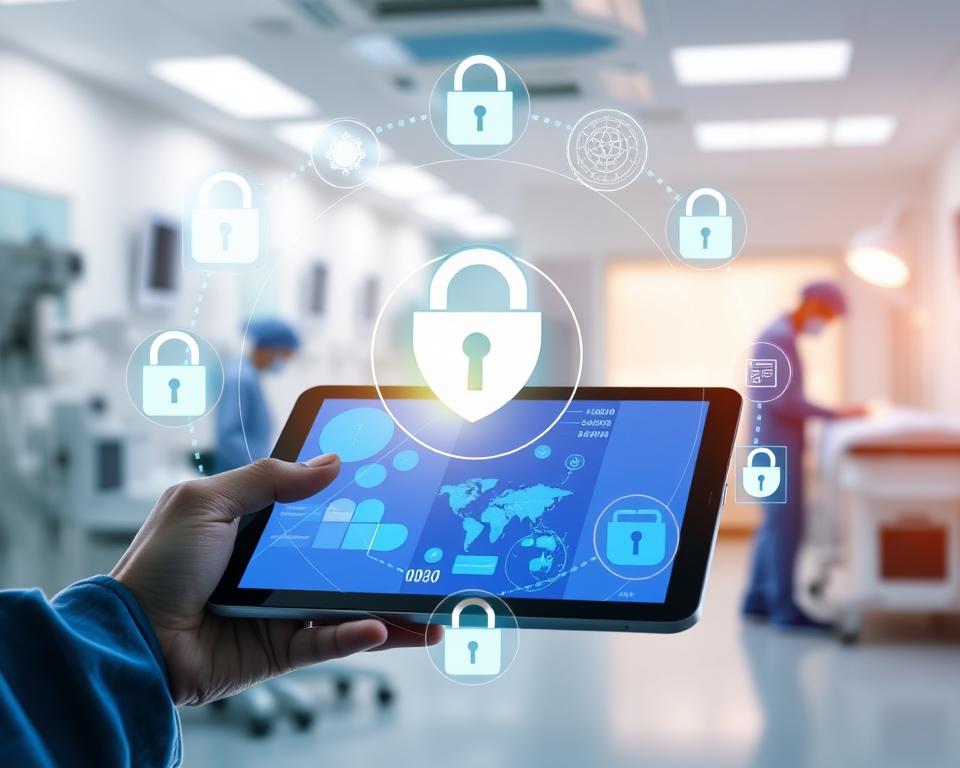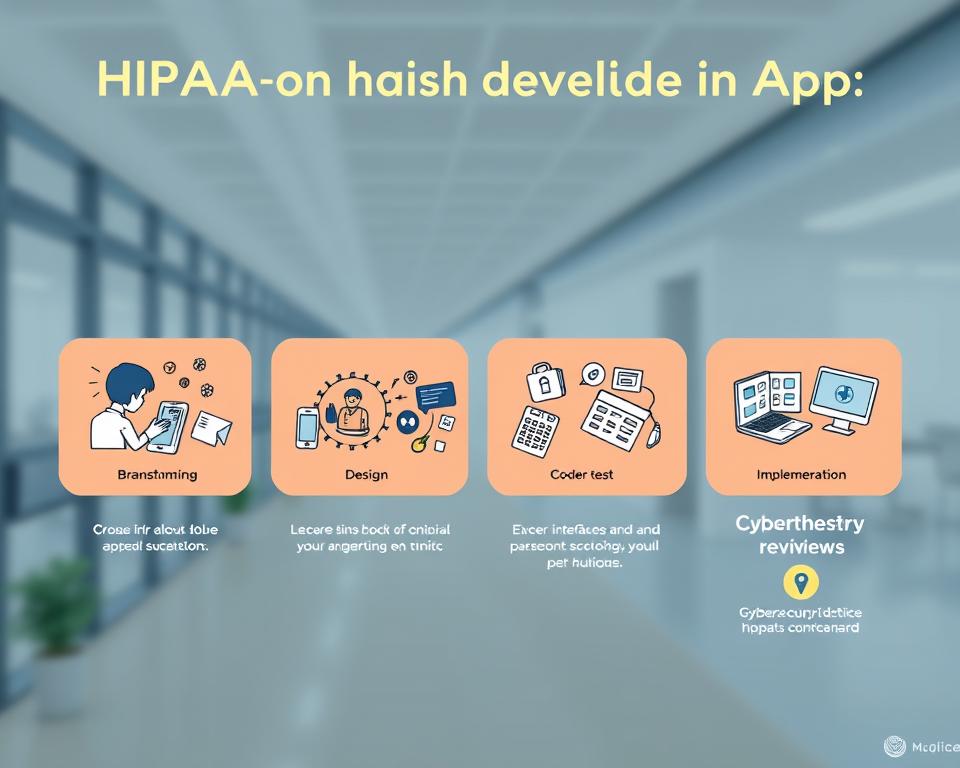In today’s digital world, healthcare groups use mobile apps to make things easier. They help patients and improve care. But, these apps must follow strict rules, especially HIPAA, to keep patient data safe.
This guide will show you how to make healthcare apps that follow HIPAA rules. It covers the key steps, security, and rules you need to follow. By doing this, healthcare teams and developers can make sure their apps protect patient info.
Table of Contents
Key Takeaways
- HIPAA compliance is crucial for protecting patient data in healthcare applications.
- Understanding HIPAA regulations and requirements is essential in the development process.
- Implementing robust security measures, such as access controls and encryption, is critical for HIPAA compliance.
- Ongoing monitoring, maintenance, and staff training are necessary to maintain HIPAA compliance.
- Partnering with HIPAA-compliant vendors and third-party providers is crucial for ensuring overall compliance.
Understanding HIPAA Compliance Requirements for Healthcare Applications
Creating healthcare apps means following strict HIPAA rules to keep patient data safe. As tech helps improve care, developers must know the key HIPAA rules. These rules cover how to handle Protected Health Information (PHI) correctly.
Key HIPAA Rules and Regulations
The HIPAA Privacy Rule sets standards for healthcare data protection. The HIPAA Security Rule focuses on keeping electronic PHI safe. Developers need to understand these rules to make sure their apps follow the law and keep users’ trust.
Protected Health Information (PHI) Definition
PHI includes health and payment info about a person. This includes medical records and even basic demographic data. Handling PHI means following strict compliance standards to avoid misuse.
Compliance Standards Overview
Apps must meet many standards to be HIPAA-compliant. This includes using strong access controls and encrypting data. They also need to keep detailed audit trails. Developers should only give users the info they need to do their jobs.
By knowing HIPAA rules, defining PHI, and following compliance standards, developers can make secure apps. These apps protect patient privacy and uphold high data protection standards.
Security Risk Assessment for Healthcare App Development
Keeping healthcare data safe is crucial in app development. A detailed security risk assessment is key to protect patient information. This ensures the app meets HIPAA standards.
The risk assessment looks for threats and vulnerabilities in the app’s setup, data storage, and how it shares information. By doing a deep threat analysis, developers can tackle risks early. They can then use vulnerability management to keep the app secure.
- Identify potential threats: Look at how the app and its data could be at risk, like cyber attacks or data breaches.
- Evaluate system vulnerabilities: Check the app’s design, security measures, and how it handles data for weak spots.
- Assess the impact of risks: Figure out how serious and likely each risk is. Focus on the biggest ones first.
- Develop mitigation strategies: Put in place security steps, like encryption, to lower risk chances and impacts.
- Continuously monitor and update: Keep checking the app’s security, update controls as needed, and stay up-to-date with new threats.
With a thorough security risk assessment, developers can protect patient data and follow HIPAA rules. This approach builds trust, keeps regulations, and makes healthcare apps more secure and reliable.
| Key Steps in Security Risk Assessment | Description |
|---|---|
| Threat Identification | Find possible threats, like cyber attacks or data breaches, that could harm the app and its data. |
| Vulnerability Assessment | Check the app’s design, security, and data handling for weak points that could be used by hackers. |
| Risk Analysis | Figure out how serious and likely each risk is, focusing on the biggest ones first. |
| Risk Mitigation | Use security steps, like encryption, to lessen the chance and impact of threats. |
| Continuous Monitoring | Regularly check the app’s security, update controls as needed, and keep up with new threats. |
By tackling security risks and vulnerabilities, developers can make their apps safer and more reliable. This protects patient data and keeps the app in line with HIPAA rules.
Essential Technical Safeguards for HIPAA Compliance
To keep healthcare apps HIPAA-compliant, strong technical safeguards are needed. These include access control, encryption, and audit trails. They all help keep patient data safe.
Access Control Mechanisms
Access control is key for HIPAA. Healthcare apps need to limit who can see patient data. This means using things like passwords, roles, and session tracking.
By giving users only what they need, apps can keep data safe. This way, everyone can do their job without seeing more than they should.
Encryption Standards
Encryption is crucial for HIPAA. It keeps patient data safe when it’s stored or sent. Apps must use top encryption like AES and FIPS 140-2.
This makes sure data stays private and safe from hackers.
Audit Controls Implementation
HIPAA says apps need good audit controls. These track who does what with patient data. Apps must keep detailed logs of all activity.
This helps find and fix security problems. It also makes sure everyone follows the rules.
| HIPAA Compliance Requirement | Technical Safeguard | Benefits |
|---|---|---|
| Access Control | User authentication, role-based access control, session management | Limit access to PHI based on job function, monitor user activities |
| Data Encryption | AES, FIPS 140-2 | Protect the confidentiality and integrity of PHI during storage and transmission |
| Audit Controls | Comprehensive audit trails | Detect and investigate security incidents, ensure accountability |
With these technical safeguards, healthcare apps can stay safe and follow HIPAA rules. This protects patient data and keeps everyone in line with the law.
Data Storage and Transmission Security Protocols
In the world of healthcare apps, keeping patient data safe is key. Strong secure data storage and data transmission protocols are vital. They protect sensitive Protected Health Information (PHI). By using advanced encryption protocols and secure cloud storage, developers can keep patient data safe and sound.
Handling PHI properly is a must for HIPAA compliance. This means strict access controls, logging data access, and keeping detailed audit trails. Healthcare apps must also follow strict encryption standards. For example, AES-256 for stored data and TLS 1.2 or higher for data in transit.
| Security Protocol | Description | Key Benefits |
|---|---|---|
| AES-256 Encryption | Advanced Encryption Standard with a 256-bit key length | Robust protection for data at rest, ensuring the confidentiality of sensitive patient information |
| TLS 1.2+ | Transport Layer Security protocol, version 1.2 or higher | Secure data transmission, preventing eavesdropping and ensuring the integrity of data in transit |
| Secure Cloud Storage | Cloud-based storage solutions that meet HIPAA compliance requirements | Scalable, highly available, and geographically distributed data storage, with robust security measures in place |
By using these strong security protocols, developers can protect patient data from start to finish. This includes secure storage and safe data transmission. A solid approach to data security is crucial for creating HIPAA-compliant apps. It builds trust with patients and healthcare providers alike.
User Authentication and Access Management
Ensuring strong user authentication and access management is key for HIPAA-compliant healthcare apps. This part covers the must-haves and best ways to secure user login, multi-factor authentication, role-based access, and session management.
Multi-Factor Authentication Requirements
Multi-factor authentication (MFA) is a top security step for HIPAA to guard patient data. It asks for two or more verification steps, like a password, biometric, or a one-time code, before access is granted. This extra step greatly lowers the chance of unauthorized access and data theft.
Role-Based Access Control
Role-based access control (RBAC) is a common method for managing user permissions in HIPAA apps. It lets admins give specific roles and access levels to users. This way, each person can only see and interact with data and features they need for their job. It keeps patient data safe and secure.
Session Management
Good session management is vital for keeping user access secure and stopping unauthorized actions in healthcare apps. It involves setting session timeouts, logging sessions, and using secure session handling. This ensures user sessions end properly and catches any odd activities quickly.
| Authentication Mechanism | Description | HIPAA Compliance |
|---|---|---|
| User Authentication | Verifying the identity of a user trying to get into the healthcare app. | Mandatory for HIPAA compliance. |
| Multi-Factor Authentication | Needs two or more verification steps, like a password and a one-time code, to log in. | Required by HIPAA to make user login stronger. |
| Role-Based Access Control | Gives specific roles and access levels to users based on their job duties. | Necessary for controlling and limiting access to protected health information (PHI). |
| Session Management | Uses secure session handling, session timeouts, and logging to keep user sessions safe. | Crucial for stopping unauthorized access and keeping sessions secure. |
Healthcare Data Encryption Best Practices
Keeping patient information safe is key for healthcare groups making HIPAA-compliant apps. Data encryption is vital to protect sensitive health info from wrong hands. Here are some top tips for encrypting healthcare data:
Implement End-to-End Encryption
Make sure data is encrypted all the way, from when it’s stored to when it’s sent. End-to-end encryption adds an extra layer of security. It keeps health info safe during the whole journey.
Utilize Strong Encryption Algorithms
Use top-notch encryption methods like AES or RSA for your health data. These strong algorithms can fight off attacks and keep your data safe.
Establish Effective Key Management
Good key management is essential for a strong encryption system. Make sure you have secure ways to create, store, share, and update encryption keys. This keeps keys safe from wrong hands.
Ensure Secure Communication Protocols
Use safe ways to send data, like HTTPS, SSL/TLS, or SFTP. These methods help keep your secure communication safe from hackers. They protect your health info from being seen by others.
“Encryption is the foundation of data security, and it’s critical for healthcare organizations to implement robust encryption practices to protect patient information.”
Following these best practices helps healthcare groups make their apps more secure. It also makes sure they follow HIPAA rules. This keeps patient data safe and private.
Developing HIPAA-Compliant Healthcare Apps: A Step-by-Step Guide
Creating a healthcare app that follows HIPAA rules is crucial. To make sure your app is compliant, you need a clear plan. This guide will help you through the planning, making, and testing steps of a HIPAA-compliant app.
Planning Phase Requirements
The planning phase is key for a successful HIPAA app project. You’ll need to understand HIPAA rules well, do a security risk check, and set up a strong compliance plan. This means setting up access controls, using encryption, and adding audit controls.
Development Phase Checklist
- Make sure data is safe when stored and sent
- Use strong user login and access controls, like multi-factor authentication
- Use the best encryption for health data
- Think about mobile security, like managing devices and wiping data remotely
- Set up rules for working with other apps and sign business agreements
Testing and Validation Process
The last step is testing and checking if your app meets HIPAA rules. This includes doing security tests, checking for compliance, and keeping an eye on the app’s performance. A detailed testing plan helps make sure your app is safe and ready to use.
| HIPAA-Compliant App Development Stages | Key Considerations |
|---|---|
| Planning Phase |
|
| Development Phase |
|
| Testing and Validation |
|
By following this guide, you can make sure your healthcare app meets all HIPAA rules. This way, you’ll have a safe, reliable, and compliant app for your patients and healthcare providers.
Mobile Healthcare App Security Considerations
The healthcare industry is moving fast towards mobile technology. This means keeping mobile healthcare apps safe is very important. Mobile app security is key for apps that follow HIPAA rules. These apps handle sensitive patient data that needs to be kept safe.
Good device management is vital for app security. Healthcare groups need strong policies and controls for devices used with apps. This includes access controls, encryption, and audit trails.
Keeping data safe on mobile devices is another big task. Apps must follow HIPAA rules for Protected Health Information (PHI). This means using secure containers, encryption, and deleting data securely.
Using mobile encryption is crucial for data safety. All data in and out of apps must be encrypted. This uses standards like AES and SSL/TLS.
| Security Consideration | Key Practices |
|---|---|
| Device Management |
|
| Secure Data Storage |
|
| Mobile Encryption |
|
By focusing on these mobile app security areas, healthcare groups can make safe apps. These apps protect patient data and earn user trust.
“Securing mobile healthcare applications is a critical priority in today’s digital landscape. Ensuring the protection of patient data is not only a regulatory requirement, but a moral obligation.”
Third-Party Integration and Business Associate Agreements
Creating HIPAA-compliant healthcare apps often means using third-party services. It’s crucial to keep protected health information (PHI) safe and private. To stay compliant, developers must pick vendors wisely and sign strong business associate agreements.
Vendor Assessment Guidelines
When looking at third-party providers, developers need to do a deep vendor assessment for HIPAA. They should check the vendor’s security steps, how they handle data, and their promise to protect PHI. Important things to look at include:
- Encryption and access control mechanisms
- Incident response and breach notification protocols
- Compliance with HIPAA rules and regulations
- Ongoing monitoring and maintenance of security measures
Contract Requirements
After finding a good third-party vendor, developers must sign a business associate agreement (BAA). This agreement should explain the vendor’s role in handling PHI and the security steps they’ll take. Key parts of the contract should cover:
- Detailed description of the services provided and the types of PHI involved
- Vendor’s commitment to implement and maintain appropriate technical, administrative, and physical safeguards
- Notification procedures in the event of a data breach or security incident
- Provisions for the return or destruction of PHI upon termination of the agreement
By carefully integrating third-party services and making solid business associate agreements, developers can keep their apps HIPAA-compliant. This helps protect their patients’ sensitive data.
Compliance Documentation and Record Keeping
Keeping detailed HIPAA documentation and record keeping is key for healthcare apps to follow rules. These records show they follow the law and are important during compliance audits. Healthcare groups need strong ways to keep patient info safe and avoid big fines.
The main HIPAA documentation needs are:
- HIPAA Privacy and Security Policies and Procedures
- Employee Training Records
- Risk Assessment Reports
- Incident Response and Breach Notification Documentation
- Business Associate Agreements
- PHI Access and Disclosure Logs
Good record keeping means keeping records current and secure. It also means having a clear plan for how long to keep documents. Regular compliance audits help check if records are right and find areas to get better.
By focusing on HIPAA documentation and careful record keeping, healthcare groups show they care about rules. They protect patient privacy and avoid big fines for not following rules.
Testing and Validation Procedures for HIPAA Compliance
Keeping patient data safe is key in healthcare apps. To do this, developers must test and validate their apps well. This ensures the app meets HIPAA standards, keeping users’ trust.
Security Testing Protocols
Security testing is vital to find and fix app vulnerabilities. It includes:
- Penetration testing to mimic real attacks and find security issues.
- Static code analysis to check the code for errors and weak spots.
- Dynamic analysis to watch how the app works and spot odd behavior.
- Vulnerability scanning to find known security problems and misconfigurations.
Compliance Verification Methods
Developers also need to check if their apps follow HIPAA rules. This means:
- Regular HIPAA audits to see if the app follows HIPAA rules.
- Using automated tools to keep track of HIPAA compliance.
- Keeping detailed HIPAA records to show they follow the rules.
By testing and validating your app’s security and compliance, you protect users’ health info. This makes sure your app meets HIPAA’s strict standards.
Ongoing Monitoring and Maintenance Requirements
Keeping healthcare apps HIPAA-compliant is a constant task. It needs continuous monitoring, regular security updates, and quick threat detection. Developers must set up strong systems for ongoing compliance maintenance.
Continuous security monitoring is key. Healthcare groups must watch their apps for any weak spots or odd actions. This means doing security checks often, analyzing logs, and setting up alert systems to catch and fix security issues fast.
Developers also need to keep up with new HIPAA rules and standards. It’s crucial to apply security updates and patches regularly to fight off new threats and stay compliant. Using automated updates and thorough tests helps keep apps safe and in line with rules.
It’s also important to have proactive threat detection for apps that follow HIPAA. Using intrusion detection systems, anomaly monitoring, and behavioral analytics helps spot and handle data breaches or unauthorized access.
| Compliance Requirement | Key Strategies |
|---|---|
| Continuous Monitoring |
|
| Security Updates |
|
| Threat Detection |
|
By using these continuous monitoring, security updates, and threat detection methods, healthcare groups can keep their apps compliant. This protects the private data of their patients.
Incident Response and Breach Notification Protocols
In the fast-changing world of healthcare tech, making apps that follow HIPAA rules is key. You need a strong plan for handling incidents and clear rules for when to tell people about data breaches. These steps are vital to keep patient data safe and follow HIPAA rules well.
Breach Detection Systems
Using top-notch breach detection systems is a must for good incident response. These systems use advanced analytics and watch in real-time. They quickly spot data breaches and help stop them from getting worse.
- Automated threat detection algorithms
- Continuous security event logging and analysis
- Anomaly detection to flag suspicious activities
- Integrated incident response workflows
Notification Requirements
If a data breach is confirmed, HIPAA-compliant apps must follow strict breach notification rules. It’s important to report breaches quickly and fully. This keeps patients informed, protects their rights, and shows the app’s commitment to safety.
- Notify affected individuals within 60 days of discovering the breach
- Provide detailed information about the nature and scope of the breach
- Report breaches affecting 500 or more individuals to the Department of Health and Human Services (HHS)
- Maintain comprehensive documentation of the incident and remediation efforts
By focusing on incident response and following breach notification rules, healthcare app makers can build trust. They protect patient data and keep up with HIPAA rules.
| Key Incident Response Elements | Breach Notification Requirements |
|---|---|
|
|
“Developing a comprehensive incident response plan is crucial for minimizing the impact of a data breach and ensuring HIPAA compliance.”
Staff Training and Security Awareness
Keeping HIPAA compliance isn’t just about tech. It also needs a team that knows security. Security awareness training and HIPAA compliance education are key for protecting data in healthcare.
Training should cover many topics. This includes spotting and reporting security issues, understanding data protection, and following best practices for patient info. Training staff to be alert and proactive helps lower the chance of data breaches and HIPAA violations.
- Start comprehensive security awareness programs to teach employees about new cyber threats and privacy laws
- Hold regular training to keep staff updated on HIPAA rules and security steps
- Make a security-conscious culture by praising employees for reporting odd activities or possible weaknesses
- Check how well your training works and change it as security needs change
Investing in security awareness training and HIPAA compliance education is vital for a strong and compliant healthcare IT setup. By training your team to be careful and proactive, you can greatly lower the risk of data breaches. This ensures the safe protection of sensitive patient info.
| Key Training Topics | Frequency | Audience |
|---|---|---|
| HIPAA compliance overview | Annually | All employees |
| Identifying and reporting security incidents | Quarterly | All employees |
| Secure handling of protected health information (PHI) | Bi-annually | Employees with access to PHI |
| Phishing and social engineering awareness | Monthly | All employees |
Conclusion
Creating HIPAA-compliant healthcare apps is very important. It needs a deep understanding of rules, strong security, and a commitment to protect patient data. This guide helps healthcare groups and app makers understand and follow HIPAA rules. They can then make secure apps that keep patient info safe.
We looked at the main HIPAA rules and what Protected Health Information (PHI) is. We also covered the key steps to follow for compliance. This includes doing security checks, using safe data storage and sharing, and making sure users are who they say they are.
Putting HIPAA first helps app developers gain patient trust. It also lowers the chance of data leaks and avoids big fines. Making apps that follow HIPAA rules not only keeps data safe. It also makes care better and improves the patient experience.


















